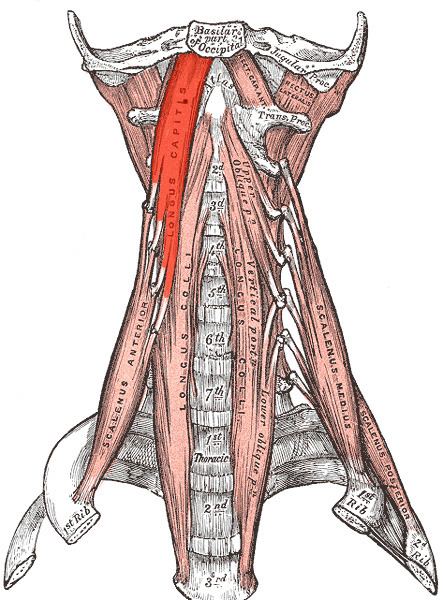Nerve C1-C3/C4 | Dorlands/Elsevier m_22/12549725 | |
 | ||
Origin anterior tubercles of the transverse processes of the third, fourth, fifth, and sixth cervical vertebræ Latin musculus longus capitis | ||
The longus capitis muscle (Latin for long muscle of the head, alternatively rectus capitis anticus major), is broad and thick above, narrow below, and arises by four tendinous slips, from the anterior tubercles of the transverse processes of the third, fourth, fifth, and sixth cervical vertebræ, and ascends, converging toward its fellow of the opposite side, to be inserted into the inferior surface of the basilar part of the occipital bone.
It is innervated by a branch of cervical plexus.
Longus capitis has several actions:
acting unilaterally, to:
acting bilaterally:
References
Longus capitis muscle Wikipedia(Text) CC BY-SA
